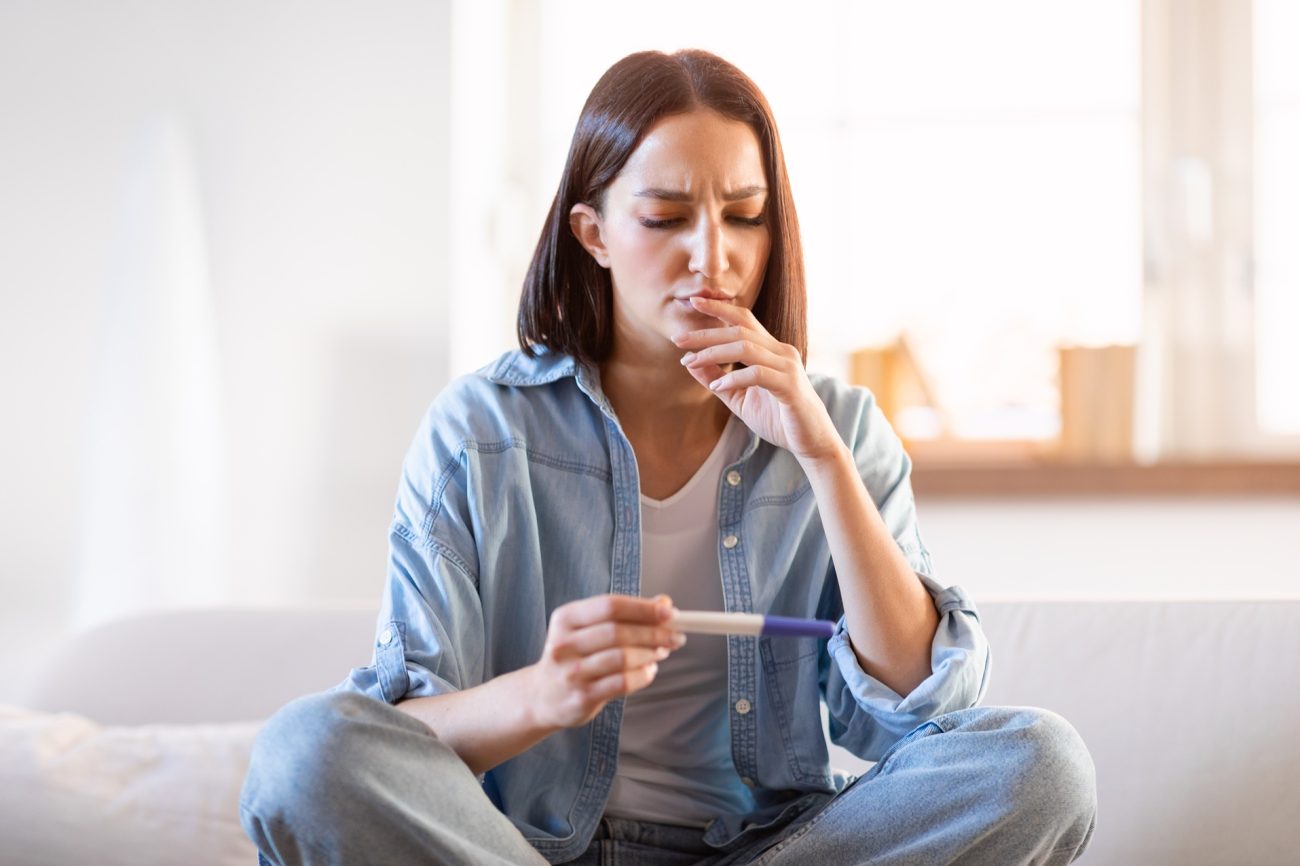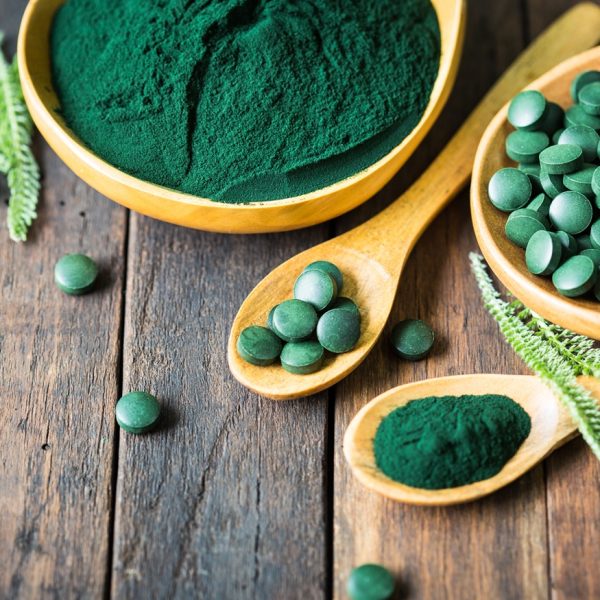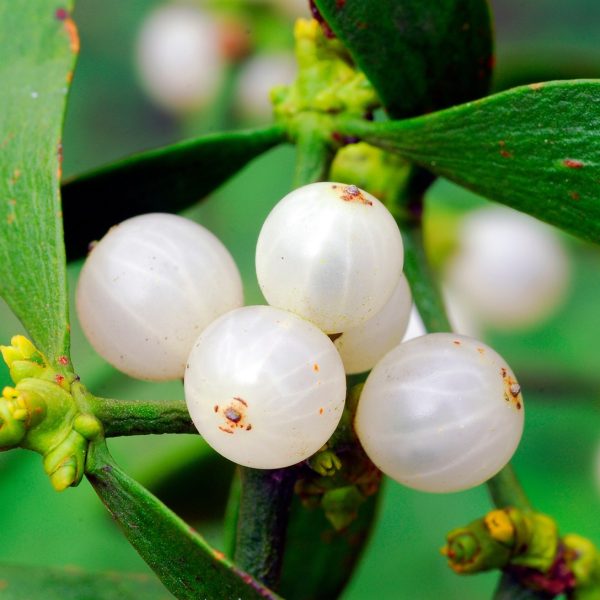Female infertility may be organic — related to an underlying medical condition, or functional — caused by hormonal imbalance, or environmental, dietary or pharmaceutical factors.
Understanding female infertility

Infertility is defined as the inability to conceive a child within one year of unprotected intercourse (1,2). Overall, 15–20% of couples experience difficulty conceiving (3,4,5); however, in the vast majority of these cases, the woman alone is offered conventional treatment (6).
Reproductive health problems leading to infertility in women can be divided into two broad categories: organic infertility and functional infertility. Organic infertility is that which is clearly related to an underlying medical condition, such as hypothalamic or pituitary problems, primary ovarian insufficiency, polycystic ovarian syndrome (PCOS), thyroid problems, pelvic inflammatory disease, endometriosis, and cervical or uterine abnormalities (7,8).
Functional infertility on the other hand is due to incorrect functioning of the reproductive system, which is not due to any underlying medical condition. It includes improper functioning of the reproductive hormones for which no underlying cause has been identified, as well as unexplained causes of infertility (9).
Understanding the root causes of female infertility

Abnormal blood flow
Poor peripheral circulation is a common complaint among women with a history of reproductive problems (10). Women with poor peripheral circulation may also be suffering from poor pelvic circulation, which impairs nourishment of the uterus and ovaries (11).
Painful periods may also suggest reduced uterine circulatory capacity (12). Spasmodic dysmenorrhoea (with cramping pains during menstruation) is a constrictive condition which restricts blood flow. Conversely, congestive dysmenorrhoea, which is signified by a dull, dragging sensation before the onset of menstruation, is due to pelvic blood congestion (13). Thrombophilia is another cause of poor uterine perfusion and may be a factor in subfertility (14).
Adequate endometrial blood supply is required for implantation to occur, and women with unexplained subfertility demonstrate a significant reduction in endometrial perfusion (15). Furthermore, poor ovarian blood flow is associated with luteal phase defect, which results in low progesterone levels during the mid-luteal phase (16).
Functional hormonal imbalance
Functional imbalance of various reproductive hormones may be contributing factors to subfertility in many cases, even when blood tests show hormones to be within normal ranges.
Oestrogen
Before menopause, oestrogen is produced in the ovaries in response to follicle stimulating hormone (FSH) from the pituitary gland. Both low levels of oestrogen and oestrogen excess can lead to reproductive health problems and reduced fertility.
Symptoms of low oestrogen may include irregular or absent periods, hot flushes and night sweats, mood changes, poor concentration, sleep disturbance, reduced libido, vaginal dryness, dry eye syndrome, and changes in skin and hair (17).
Conversely, women with conditions such as menorrhagia, endometriosis, fibroids, and oestrogen-dependent cancers, are likely to have a relative excess of oestrogen (18). However, not all women with relative oestrogen excess have an identifiable oestrogen-dependent medical condition. Increased oestrogen is also associated with early larger breast size, and abdominal obesity (characterised by an increased waist to hip ratio) (19,20). Therefore women are often diagnosed with oestrogen dominance based on their clinical presentation.
Functional hormone imbalance may also be suggested by symptoms associated with premenstrual syndrome (PMS) (21). Relative oestrogen excess may increase feelings of irritability, aggressiveness, and anxiety (22). Therefore, women with premenstrual mood disturbances who are having difficulty conceiving are likely to have a relative excess of oestrogen.
Progesterone
Progesterone is predominantly produced by the corpus luteum after ovulation, in response to stimulation by LH from the pituitary gland. Its main function is to prepare the endometrium for fertilisation; and if this occurs, to maintain the endometrium during early pregnancy and inhibit uterine contractions that would otherwise result in pregnancy loss. It also helps to counterbalance the effects of high levels of oestrogen (23).
Any condition that results in anovulation will lead to low progesterone levels. In women who have no underlying medical condition, and who are ovulating, the corpus luteum may not produce sufficient levels of progesterone, leading to a shortened luteal phase. Symptoms such as dysfunctional uterine bleeding, cyclic breast disorders, and premenstrual mood changes may also suggest progesterone deficiency (24). Progesterone is readily converted to other hormones, including stress hormones. Therefore, stress can significantly reduce progesterone levels (23).
Cortisol and stress
In stressful situations the adrenal glands produce cortisol in order to help the body to adapt. However, chronic stress can lead to persistent cortisol elevation.
Signs and symptoms of elevated cortisol include cognitive difficulties, mood changes, raised blood pressure, elevated blood sugar levels, central obesity, and bone loss. High cortisol also leads to decreases in sex hormone-binding globulin (SHBG), which alters the activity of reproductive hormones.
Stress also causes the body to increase production of epinephrine (adrenalin), which causes blood to be drawn away from the uterus, and prevents the uptake of progesterone by progesterone receptors (25,26). When adrenaline is continuously elevated, production of oestrogen is reduced (23). There is also evidence that stress alters prolactin levels. All of these effects on various reproductive hormones can reduce fertility (27).
Prolactin
Hyperprolactinaemia refers to elevated levels of prolactin, the pituitary hormone responsible for breast development and lactation (28). Hyperprolactinaemia may be caused by head or chest wall trauma, stress, various medications (especially those affecting dopamine levels), hypoglycaemia, autoimmune disease, and low thyroid function (23,29,30). Prolactin is thought to contribute to some of the symptoms of PMS, particularly breast tenderness, fluid retention and increased anger and aggression (21,31,32).
Prolactin levels are frequently higher in women with functional infertility, even where they may not necessarily exceed the normal reference range (21). Higher concentrations of prolactin inhibit progesterone and reduce oestrogen levels by inhibiting the activity of aromatase (the enzyme which catalyses the conversion of androgens to oestrogen) (23).
Prostaglandin imbalance
Prostaglandin E2 (PGE2) causes inflammation, increased uterine muscle spasm, and uterine ischaemia (33,34); and significantly higher concentrations of PGE2 are found in the endometrium and menstrual fluid of women with dysmenorrhoea (35). Abnormal response to prostaglandins may also lead to premenstrual aches and pains (hyperalgesia) and menstrual migraine (34).
An aberrant uterine response to PGE2 has been demonstrated in women with functional infertility (36). It is likely that the aberrant response to PGE2 may be responsible for failure of implantation due to uterine stimulation.

Nutritional deficiencies
Infertility can be associated with deficiencies of various nutrients including vitamins A, C, E, B vitamins, folic acid, zinc, iron, and essential fatty acids such as EPA and DHA (37,38). Women who take multivitamins have a lower risk of infertility (39,40). 400 mcg folic acid per day is also recommended for women who are trying to conceive in order to prevent spina bifida (41).
Gluten intolerance
Consumption of foods containing gluten (wheat, rye, barley, and spelt) may contribute to infertility in patients with gluten intolerance (42,43). It has been suggested that this may be due to resulting malabsorption of folic acid and other nutrients (44). Nutritional deficiencies (such as iron deficiency anaemia, folate or B12 deficiency), which cannot be explained by diet or blood loss, may indicate malabsorption due to possible gluten intolerance.
Caffeine
The fertility of healthy women attempting to conceive may be halved by consumption of the equivalent of one cup of coffee or more per day (45). The mechanism of action of caffeine on fertility is unknown; however, it may be due to a combination of reduced circulatory capacity and increased production of stress hormones. Caffeine consumption has also been associated with increased risk of miscarriage.
Alcohol
Several studies have demonstrated that the likelihood of conception decreases with increasing alcohol intake even among women with an alcohol intake corresponding to five or fewer drinks per week (46). As little as four units of alcohol per week has also been associated with a significantly increased risk of miscarriage (47).
Smoking
Cigarette smoking has been linked with reduced fertility in women (48,49). The percentage of women experiencing conception delay for more than twelve months is over 50% higher for smokers than in non-smokers, and the impact of passive cigarette smoke exposure is almost as great as the impact of active smoking (50).
Each stage of reproductive function including folliculogenesis, hormone production, embryo transport, endometrial receptivity, and endometrial angiogenesis, is a target for cigarette smoke (51). Uterine blood flow is also impaired, which may be due to increased levels of adrenalin and noradrenalin, with resulting vascular resistance (52). In addition to cigarette smoking, smoking cannabis causes disturbances in the endocannabinoid system potentially contributing to infertility (53).
Exercise
Women who exercise tend to have lighter and less frequent periods (54). This may be as a result of increased oestrogen clearance. Women who exercise regularly also have a reduced risk of infertility due to ovulatory disorders (39). However, it is also important to avoid over-exercising, since vigorous exercise for more than one hour per day is associated with infertility (55).
Drug-induced infertility
The effects of various prescription drugs (such as antipsychotics, spironolactone, and chemotherapy drugs) on fertility are well documented. However, the effects of non-steroidal anti-inflammatory drugs (NSAIDs) are less well known. NSAIDs are available over the counter, and are widely used for the treatment of pain, inflammation, and fever. However, they may also interfere with maturation and egg release by interfering with prostaglandin synthesis (56).
Herbal and holistic solutions
Treatment for organic infertility consists of treating the underlying cause and is therefore beyond the scope of this article, which will focus on treatment of functional infertility, which is not due to any underlying medical condition.

Improving blood flow
Warming herbs such as rosemary (Rosmarinus officinalis) and ginger (Zingiber officinale) may be used to stimulate the peripheral circulation, and may also help to promote healthy circulation to the reproductive organs (57).
In cases of spasmodic dysmenorrhoea, uterine spasmolytics such as peony (Paeonia lactiflora), cramp bark (Viburnum opulus) may be useful to improve uterine blood flow. Magnesium may also help to decrease uterine cramping (13). It is found in foods such as soya products, whole-grain cereals, seeds, and green leafy vegetables (58).
In cases of pelvic blood congestion, uterine tonics such as raspberry (Rubus idaeus) may be more useful, to encourage more effective uterine contractions (13) Yarrow (Achillea millefolium) also reduces pelvic congestion, possibly due to an anti-thrombotic effect, as well as relaxation of the veins, which allows congestion to move out of the capillaries (59,60).
There are numerous herbs, such as motherwort (Leonurus cardiaca),which seem to possess the apparently contradictory effects of both stimulating uterine activity and relieving spasm. This combination of actions helps to regulate uterine function by encouraging more orderly and effective contractions (13). Dong gui (Angelica sinensis) is another uterine tonic and antispasmodic herb, which is widely used to treat dysmenorrhoea, and is traditionally used to treat blood stasis in TCM (8,61). It is also thought to regulate prostaglandin synthesis, and to act as a circulatory stimulant (8,13).
Nutrients which help to reduce blood stagnation include: niacin (vitamin B3), found in whole grains and sprouted legumes; vitamin C, found in fresh fruit and vegetables; vitamin E, found in whole grains, nuts, and seeds and leafy green vegetables; and omega-3 fatty acids, found in oily fish and seeds such as chia and flax (59).
Increasing exercise helps to improve pelvic circulatory capacity, and other approaches such as sitz baths may also be used to increase the pelvic circulation and reduce congestion (1,62).
Improving oestrogen levels
Phytoestrogens are plant based compounds, which include isoflavones (found in soybeans) and lignans (found in flax seed). Phytoestrogens have an affinity for oestrogen receptors, and exert a weak oestrogenic effect in comparison to oestradiol (63). They can help to reduce symptoms associated with lower oestrogen levels, with limited side effects (64).
Similarly, herbs such as shatavari (Asparagus racemosa), and fenugreek (Trigonella foenum graecum) contain steroidal saponins such as diosgenin, which also bind to oestrogen receptors (65).
Maca (Lepidium meyenii) can also help to improve ovarian function in women with low oestrogen. It improves both pituitary and ovarian function, and thereby increases production of both oestrogen and progesterone, reducing symptoms such as hot flushes, sweating, sleep disturbance, mood changes, joint pains, and heart palpitations (66).
Adaptogens and adrenal tonics, such as ashwagandha (Withania somnifera) improve adrenal function, and may thereby help to increase adrenal reproductive hormone production (67). Ashwagandhahas also been shown to increase levels of DHEA, which is essential for oestrogen production in the ovary (68).

Reducing relative oestrogen excess
Environmental oestrogen-like chemicals (xenoestrogens), which are found in food contaminants (such as pesticides and plastic residues), may have an oestrogenic effect, and are increasingly implicated in cases of infertility (69). Non-organic meat and dairy products can also contain high levels of xenoestrogens (70). Women who are trying to conceive are advised to avoid eating food that has been stored or heated in plastic packaging, to avoid using pesticides in the garden, to buy organic produce where possible, and to peel or scrub any non-organic fruit and vegetables. It is also advisable to take a vitamin B complex supplement, since vitamin B deficiency seems to increase susceptibility to the effects of excess oestrogen (71).
Excess oestrogen is metabolised by the liver and herbs which improve liver metabolism include turmeric (Curcuma longa), St John’s wort (Hypericum perforatum), rosemary (Rosmarinus officinalis) and schisandra (Schisandra chinensis).
Foods high in methionine (such as beans, pulses, onions, and garlic), cruciferous vegetables (such as cabbage, broccoli, and kale), resveratrol (from berries, grapes and red wine), linseeds, green tea, and soya also assist with metabolism of oestrogen in the liver (13,72).
In cases of oestrogen dominance, phytoestrogens, found in soybean products, and to a lesser extent, other beans and pulses, whole-grain cereals, nuts, and seeds, compete with endogenous oestrogens and prevent them from exerting stronger oestrogenic effects (73). In order to be absorbed from the digestive system, isoflavones must first undergo hydrolysis by enzymes, which are produced by bifidobacteria in the intestine (74). Therefore, the efficacy of dietary phytoestrogens varies between different individuals depending on their gut flora. Consuming fermented soya products or taking a probiotic supplement may help to enhance the bioavailability of isoflavones (75).
Improving progesterone function
Agnus castus (Vitex agnus-castus) addresses a wide range of problems, such as premenstrual mood disturbance, fluid retention, and mastalgia due to poor progesterone function and hyperprolactinaemia (76,77,78). It is thought to inhibit prolactin release from the anterior pituitary, which leads to an increase in luteinising hormone (LH), promoting corpus luteum development in the luteal phase, and thereby increasing levels of progesterone (79). Other herbs that are thought to improve progesterone function include yarrow (Achillea millefolium), lady’s mantle (Alchemilla vulgaris), and peony (Paeonia lactiflora) (80). In fact, Paeonia lactiflora is thought to have a regulating effect on a variety of hormones including oestrogen, androgens, progesterone, and prolactin (13).
Magnesium helps to decrease conversion of progesterone to aldosterone. It is found in soya products, whole-grain cereals, seeds, and leafy green vegetables. Adaptogens and adrenal tonics improve adrenal function, and may thereby help to increase adrenal production of progesterone and its metabolites (67). They include herbs such as siberian ginseng (Eleutherococcus senticosus) and ashwagandha (Withania somnifera).
Treating stress and raised cortisol
In conjunction with stress management techniques, herbal treatment for excess cortisol includes nervine tonics such as St John’s wort (Hypericum perforatum), and relaxing nervines such, chamomile (Matricaria recutita) to decrease levels of stress. Adrenal adaptogens such as ashwagandha (Withania somnifera) increase the individual’s ability to adapt to various environmental factors, and to avoid the damage they may cause (81).

Reducing prolactin levels
Therapeutic measures that reduce prolactin may also help to improve fertility. For example, agnus castus (Vitex agnus castus) has been shown to increase conception in infertile women with hyperprolactinaemia and luteal phase dysfunction (77,82). It increases dopamine, which lowers levels of prolactin (13).
Sage (Salvia officinalis) binds to GABA receptors, increases dopamine, and inhibits prolactin synthesis and release (30,83). Black cohosh (Cimicifuga racemosa) also has a dopaminergic action, which inhibits prolactin release (23).
Deficiencies of vitamin B6, magnesium, and zinc are associated with low dopamine and raised prolactin (23). Therefore, supplementing these nutrients may help to improve dopamine synthesis, and thereby reduce hyperprolactinaemia (18). Since stress affects prolactin levels, stress management and relaxation techniques may be useful for reducing elevated prolactin levels in conjunction with herbal medicine and nutritional supplements (18).
Reducing PGE2 in favour of anti-inflammatory prostaglandins
Prostaglandin E2 (PGE2) is synthesised from arachidonic acid found in animal fats (33). Therefore, reducing consumption of animal fats and increasing intake of raw vegetable and seed oils selectively decreases dietary precursors of series 2 prostaglandins, and increases series 1 prostaglandins, which have anti-inflammatory, antithrombotic, and antispasmodic effects.
Essential fatty acid supplements such as evening primrose or starflower oil contain linolenic and gamma linolenic acid, which increase PGE1 (84). Vitamin E can also positively influence prostaglandin ratios; and vitamin B6 and zinc are necessary co-factors in the production of series 1 prostaglandins (13).
Ginger (Zingiber officinale) has been shown to reduce the production of prostaglandin E2, and thereby reduce excessive uterine contractions (85). Dang gui (Angelica sinensis) is also thought to regulate prostaglandin synthesis (13).
Uterine spasmolytics such as peony (Paeonia lactiflora) and cramp bark (Viburnum opulus) may be useful for dysmenorrhoea with intermittent cramping pains. Magnesium may also help to decrease uterine cramping (13). It is found in foods such as soya products, whole-grain cereals, seeds, and green leafy vegetables (13).
References
- Abma, J. C., Chandra, A., Mosher, W. D., Peterson, L., & Piccinino, L. (1997). Fertility, family planning and women’s health: estimates from the National Survey of Family Growth. Vital and Health Statistics, 23: 1–14.
- Hummel, W. P. (2005). Miscarriage and the Successful Pregnancy: A Woman’s Guide to Infertility and Reproductive Loss. iUniverse.
- Cahill, D. J., & Wardle, P. G. (2002). Management of infertility. British Medical Journal, 325: 28–32. https://doi.org/10.1136/bmj.325.7354.28
- Forti, G., & Krausz, C. (1998). Evaluation and treatment of the infertile couple. Journal of Clinical Endocrinology & Metabolism, 83(12): 4177–4188.https://doi.org/10.1210/jcem.83.12.5296
- Hart, R. (2003). ABC of subfertility: Unexplained infertility, endometriosis and fibroids. British Medical Journal, 327: 721–724. https://doi.org/10.1136/bmj.327.7417.721
- Gascoigne, S. (2001). The Clinical Medicine Guide: A Holistic Perspective. Clonakilty, Ireland: Jigme.
- Williams, K. E., Marsh, W. K., & Rasgon, N. L. (2007). Mood disorders and fertility in women: a critical review of the literature and implications for future research. Human Reproduction Update [online]. Available from http://humupd.oxfordjournals.org/cgi/content/full/dmm019v1 (accessed 12 June 2010).
- Liu, W., & Gong, C. (2009). Opening the blockage to reproduction: Infertility. Traditional Chinese Medicine Information Page [online]. Available from http://tcmpage.com/hpinfertility.html (accessed 4 July 2011).
- Indhorn, M., & van Balen, F. (2002). Infertility around the Globe: New Thinking on Childlessness, Gender, and Reproductive Technologies. Berkeley, CA: University of California Press.
- Ward, N. (1995). How successful is the environmental approach to infertility? Foresight Figures [letter]. Journal of Nutritional & Environmental Medicine, 5: 205.
- Zhao, L. Q. (2011). TCM treatment of premature ovarian failure and infertility. Journal of the Association of Traditional Chinese Medicine (UK), 18(1): 22–26.
- Timonen, S., & Procopé, B. J. (1971). Premenstrual syndrome and physical exercise. Acta Obstetricia et Gynecologica Scandinavica, 50(4): 331–337. https://doi.org/10.3109/00016347109157334
- Trickey, R. (2003). Women, Hormones & the Menstrual Cycle. Sydney, Australia: Allen & Unwin.
- Bick, R. L., & Hoppensteadt, D. (2005). Recurrent miscarriage syndrome and infertility due to blood coagulation protein/platelet defects: a review and update. Clinical and Applied Thrombosis/Hemostasis, 11(1): 1–13. https://doi.org/10.1177/107602960501100101
- Raine-Fenning, N. J., Campbell, B. K., Kendall, N. R., Clewes, J. S., & Johnson, I. R. (2004). Endometrial and subendometrial perfusion are impaired in women with unexplained infertility. Human Reproduction, 19(11): 2605–2614. https://doi.org/10.1093/humrep/deh459
- Takasaki, T., Tamura, H., Taniguchi, K., Asada, H., Taketani, T., Matsuoka, A., Yamagata, Y., Shimamura, K., Morioka, H., & Sugino, N. (2009). Luteal blood flow and luteal function. Journal of Ovarian Research [online]. Available from : http://ovarianresearch.com/content/2/1/1 (accessed 24 January 2009).
- National Institutes of Health (2016). Primary ovarian insufficiency. MedlinePlus [online]. Available from: https://medlineplus.gov/primaryovarianinsufficiency.html (accessed 15 November 2019).
- Trickey, R. (2011). Women, Hormones and the Menstrual Cycle. Clifton Hill, Victoria, Australia: Melbourne Holistic Health Group.
- Jemström, H. (1997). Breast size in relation to endogenous hormone levels, body constitution and oral contraceptive use in healthy nulligravid women aged 19–25 years. American Journal of Epidemiology, 145(7): 571–580. https://doi.org/10.1093/oxfordjournals.aje.a009153
- Paxton, R. H., King, D. W., Garcia-Prieto, C., Connors, S. K., Hernandez, M., Gor, B. J., & Jones, L. A. (2013). Associations between body size and serum estradiol and sex hormone-binding globulin levels in premenopausal African American women. Journal of Clinical Endocrinology and Metabolism, 98(3): E485–E490. https://doi.org/10.1210/jc.2012-2782
- Benedek-Jaszmann, L. J., & Hearn-Sturtevant, M. D. (1976). Premenstrual tension and functional infertility: aetiology and treatment. The Lancet, 307(7969): 1095–1098. https://doi.org/10.1016/s0140-6736(76)90062-3
- Munday, M. R., Brush, M. G., & Taylor, R. W. (1981). Correlations between progesterone, oestradiol and aldosterone levels in the premenstrual syndrome. Clinical Endocriology, 14(1): 1–9. https://doi.org/10.1111/j.1365-2265.1981.tb00359.x
- Brice-Ytsma, H., & McDermott, A. (2020). Herbal Medicine in Treating Gynaecological Conditions. London: Aeon.
- Ford, O., Mol, B., & Roberts, H. (2006). Progesterone for premenstrual syndrome. The Cochrane Library [online]. Available from http://onlinelibrary.wiley.com/doi/10.1002/14651858.CD003415/full (accessed 2 January 2012).
- Boyle, M. (2002). Emergencies around Childbirth: A Handbook for Midwives. Milton Keynes, UK: Radcliffe.
- Dalton, K. (1990). The aetiology of premenstrual syndrome is with the progesterone receptors. Medical Hypotheses, 31(4): 323–327. https://doi.org/10.1016/0306-9877(90)90026-b
- Harper, R., & Lenton, E. A. (1985). Prolactin and subjective reports of stress in women attending an infertility clinic. Journal of Reproductive and Infant Psychology, 3(1): 3–8.
- Shenenberger, D. (2018). Hyperprolactinemia. Medscape [online]. Available from https://emedicine.medscape.com/article/121784-overview (accessed 14 November 2019).
- Longo, D. L., Fauci, A. S., Kasper, D. L., Hauser, S. L., Jameson, J. L., & Loscalzo, J. (2011). Harrison’s Principles of Internal Medicine (18th edn) (p. 2887). New York: McGraw-Hill Professional.
- Heffner, L. J., & Schust, D. J. (2014). The Reproductive System at a Glance. Oxford: John Wiley & Sons.
- Sharma, P., Kulshreshtha, S., Mohan, G., Singh, S., & Bhagoliwal, A. (2007). Role of bromocriptine and pyridoxine in premenstrual tension syndrome. Indian Journal of Physiology & Pharmacology, 51(4): 368–374. https://pubmed.ncbi.nlm.nih.gov/18476391/
- Kellner, R., Buckman, M. T., Fava, M., Fava, G. A., & Mastrogiacomo, I. (1984). Prolactin, aggression and hostility: a discussion of recent studies. Psychiatric Developments, 2(2): 131–138. https://pubmed.ncbi.nlm.nih.gov/6483849/
- Curtis-Prior, P. B. (2004). The Eicosanoids. New York: John Wiley & Sons.
- Benedetto, C. (1989). Eicosanoids in primary dysmenorrhea, endometriosis and menstrual migraine. Gynecological Endocrinology, 3(1): 71–94. https://doi.org/10.3109/09513598909152454
- Lumsden, M. A., Kelly, R. W., & Baird, D. T. (2005). Primary dysmenorrhoea: the importance of both prostaglandins E2 and F2α. BJOG: An International Journal of Obstetrics and Gynaecology, 90(12): 1135–1140. https://doi.org/10.1111/j.1471-0528.1983.tb06460.x
- Toppozada, M., Khowessah, S., Shaala, S., Osman, M., & Rahman, H. A. (1977). Aberrant uterine response to prostaglandin E2 as a possible etiologic factor in functional infertility. Fertility and Sterility, 28(4): 434–439. https://doi.org/10.1016/s0015-0282(16)42491-x
- Mortimore, D. (2001). The Complete Illustrated Guide to Vitamins and Minerals. London: Element.
- Mehendale, S. S., Kilari Bams, A. S., Deshmukh, C. S., Dhorepatil, B. S., Nimbasrgi, V. N., & Joshi, S. R. (2009). Oxidative stress-mediated essential polyunsaturated fatty acid alterations in female infertility. Human Fertility, 12(1): 28–33. https://doi.org/10.1080/14647270802298280
- Chavarro, J. E., Rich-Edwards, J. W., Rosner, B. A. , & Willett, W. C. (2007). Diet and lifestyle in the prevention of ovulatory disorder infertility. Obstetrics & Gynecology, 110(5): 1050–1058. https://doi.org/10.1097/01.aog.0000287293.25465.e1
- Czeizel, A., Metneki, J., & Dudas, I. (1996). The effect of preconceptional multivitamin supplementation on fertility. International Journal for Vitamin and Nutrition Research, 66(1): 55–58. https://pubmed.ncbi.nlm.nih.gov/8698547/
- NICE (2004). Fertility: assessment and treatment for people with fertility problems. National Institute for Clinical Excellence [online]. Available from www.nice.org.uk (accessed 28 January 2009).
- Collin, P., Vilska, S., Heinonen, P. K., Hallstrom, O., & Pikkarainen, P. (1996). Infertility and coeliac disease. Gut, 39(3): 382–384. https://doi.org/10.1136/gut.39.3.382
- Sher, K. S., & Mayberry, J. F. (1996). Female fertility, obstetric and gynaecological history in coeliac disease: a case control study. Acta Paediatrica, 85(412): 76–77. https://doi.org/10.1111/j.1651-2227.1996.tb14258.x
- Pellicano, R., Astegiano, M., Bruno, M., Fagoonee, S., & Rizzetto, M. (2007). Women and celiac disease: association with unexplained infertility. Minerva Medica, 98(3): 217–219. https://pubmed.ncbi.nlm.nih.gov/17592443/
- Wilcox, A., Weinburg, C., & Baird, D. (1988). Caffeinated beverages and decreased fertility. The Lancet, 2(8626–8627): 1453–1456. https://doi.org/10.1016/s0140-6736(88)90933-6
- Jensen, T.K., Hjollund, N. H. I., Henriksen, T. B., Scheike, T., Kolstad, H., Giwercman, A., Ernst, E., Bonde, J. P., Skakkebæk, N. E., & Olsen, J. (1998). Does moderate alcohol consumption affect fertility? Follow up study among couples planning first pregnancy. British Medical Journal, 317(7157): 505–510. https://doi.org/10.1136/bmj.317.7157.505
- Avalos, L. A., Roberts, S. C., Kaskutas, L. A., Block, G., & Li, D.-K. (2014). Volume and type of alcohol during early pregnancy and the risk of miscarriage. Substance Use & Misuse, 49(11): 1437–1445. https://doi.org/10.3109/10826084.2014.912228
- Augood, C., Duckitt, K., & Templeton, A. A. (1998). Smoking and female infertility: a systematic review and meta-analysis. Human Reproduction, 13: 1532–1539. https://doi.org/10.1093/humrep/13.6.1532
- Laurent, S. L., Thompson, S. J., Addy, C., Garrison, C. Z., & Moore, E. E. (1992). An Epidemiologic study of smoking and primary infertility in women. Fertility and Sterility, 57(3): 565–572. https://pubmed.ncbi.nlm.nih.gov/1740199/
- Hull, M. G., North, K., Taylor, H., Farrow, A., & Ford, W. C. (2000). Delayed conception and active and passive smoking (The Avon Longitudinal Study of Pregnancy and Childhood Study Team). Fertility and Sterility, 74(4): 725–733. https://doi.org/10.1016/s0015-0282(00)01501-6
- Dechanet, C., Anahory, T., Mathieu Daude, J. C., Quantin, X., Reyftmann, L., Hamamah, S., Hedon, B., & Dechaud, H. (2011). Effects of cigarette smoking on reproduction. Human Reproduction Update, 17(1): 76–95. https://doi.org/10.1093/humupd/dmq033
- Grassi, G., Seravalle, G., Calhoun, D. A., Bolla, G. B., Giannattasio, C., Marabini, M., Del Bo, A., & Mancia, G. (1994). Mechanisms responsible for sympathetic activation by cigarette smoking in humans. Circulation, 90(1): 248–253. https://doi.org/10.1161/01.cir.90.1.248
- Karasu, T., Marczylo, T. H., Maccarrone, M., & Konje, J. C. (2011). The role of sex steroid hormones, cytokines and the endocannabinoid system in female fertility. Human Reproduction Update, 17(3): 347–361. https://doi.org/10.1093/humupd/dmq058
- Harlow, S. D., & Campbell, B. C. (1994). Host factors that influence the duration of menstrual bleeding. Epidemiology, 5(3): 352–355. https://doi.org/10.1097/00001648-199405000-00017
- Green, B. B., Daling, J. R., Weiss, N. S., Liff, J. M., & Koepsell, T. (1986). Exercise as a risk factor for infertility with ovulatory dysfunction. American Journal of Public Health, 76(12): 1432–1436. https://doi.org/10.2105/ajph.76.12.1432
- Mendonca, L. L. F., Khamashta, M. A., Nelson-Piercy, C., Hunt, B. J., & Hughes, G. R. (2000). Non‐steroidal anti‐inflammatory drugs as a possible cause for reversible infertility. Rheumatology (Oxford), 39(8): 880–882. https://doi.org/10.1093/rheumatology/39.8.880
- Holmes, P. (2007) The Energetics of Western Herbs: A Materia Medica Integrating Western & Chinese Herbal Therapeutics, Volume 1 (4th edn). Santa Rosa, CA: Snow Lotus.
- Pitchford, P. (2002). Healing With Whole Foods (3rd edn). Berkeley, CA: North Atlantic.
- Weiss, R. F. (1988). Herbal Medicine. Gothenburg, Sweden: Arcanum.
- Wood, M. (2004). The Practice of Traditional Western Herbalism: Basic Doctrine, Energetics and Classification. Berkeley, CA: North Atlantic.
- Bartram, T. (1995). Encyclopedia of Herbal Medicine. Christchurch, UK: Grace.
- Hassan, I. (2010). Abzan (sitz bath): A regime in unani system of medicine. Articlesbase [online]. Available from http://articlesbase.com/alternative-medicine-articles/abzan-sitz-bath-a-regime-in-unani-system-of-medicine-2749047.html (accessed 27 March 2012).
- Dennehy, C. E. (2006). The use of herbs and dietary supplements in gynecology: an evidence-based review. Journal of Midwifery & Women’s Health, 51: 402–409. https://doi.org/10.1016/j.jmwh.2006.01.004
- Ye, Y. B., Tang, X. Y., Verbruggen, M. A., & Su, Y. X. (2006). Soy isoflavones attenuate bone loss in early postmenopausal Chinese women : a single-blind randomized, placebo-controlled trial. European Journal of Nutrition, 45: 327–334. https://doi.org/10.1007/s00394-006-0602-2
- Tabakova, P., Dimitrov, M., & Tashkov, B. (2012). Clinical studies on Tribulus terrestris protodioscin in women with endocrine infertility or menopausal syndrome. Herbpharm USA [online]. Available from http://scicompdf.se/tiggarnot/tabakova-HerbPharmUSA.pdf (accessed 2 March 2020).
- Meissner, H. O., Reich-Bilinska, H., Mscisz, A., & Kedzia, B. (2006). Therapeutic effects of pre-gelatinized maca (Lepidium peruvianum chacon) used as a non-hormonal alternative to HRT in perimenopausal women – clinical pilot study. International Journal of Biomedical Science, 2(2): 143–159. https://pmc.ncbi.nlm.nih.gov/articles/PMC3614596/
- Tillotson, A. K. (2009). Female infertility. [Online] Available from http://oneearthherbs.squarespace.com/diseases/female-infertility.html (accessed on 28 January 2009).
- Lopresti, A. L., Smith, S. J., Malvi, H., & Kodgule, R. (2019). An investigation into the stress-relieving and pharmacological actions of an ashwagandha (Withania somnifera) extract. A randomized, double-blind, placebo-controlled study. Medicine (Baltimore), 98(37): e17186. https://doi.org/10.1097/md.0000000000017186
- Hudson, T. (2008). Women’s Encyclopedia of Natural Medicine. New York: McGraw Hill.
- Wetherbee, K. (2004). Infertility: improving the odds. Herbs for Health [online]. Available from http://cms.herbalgram.org/herbclip/278/review44159.html (accessed 28 January 2009).
- Bell, E. (1980). The excretion of a vitamin B6 metabolite and the probability of recurrence of early breast cancer. European Journal of Cancer, 16(2): 297–298. https://doi.org/10.1016/0014-2964(80)90165-6
- Michnocicz, J. J., & Bradlow, H. L. (1991). Altered estrogen metabolism and excretion in humans following consumption of indole-3-carbinol. Nutrition and Cancer, 16(1): 59–66. https://doi.org/10.1080/01635589109514141
- Verheus, M., van Gils, C. H., Keinan-Boker, L., Grace, P. B., Bingham, S. A., & Peeters, P. H. M. (2007). Plasma phytoestrogens and subsequent breast cancer risk. Journal of Clinical Oncology, 25(6): 648–655. https://doi.org/10.1200/jco.2006.06.0244
- Setchell, K. D. R., Brown, N. M., Zimmer-Nechemias, L., Brashear, W. T., Wolfe, B. E., Kirschner, A. S., & Heubi, J. E. (2002). Evidence for the lack of absorption of soy isoflavone glycosides in humans, supporting the crucial role of intestinal metabolism for bioavailability. American Journal of Clinical Nutrition, 76(2): 447–453. https://doi.org/10.1093/ajcn/76.2.447
- Tsangalis, D., Wilcox, G., Shah, N. P., & Stojanovska, L. (2005). Bioavailability of isoflavone phytoestrogens in postmenopausal women consuming soya milk fermented with probiotic bifidobacteria. British Journal of Nutrition, 93(6): 867–877. https://doi.org/10.1079/bjn20041299
- Berger, D., Schaffner, W., Schrader, E., Meier, B., &Brattström, A. (2000). Efficacy of Vitex agnus castus L. extract Ze 440 in patients with pre-menstrual syndrome (PMS). Archives of Gynecology and Obstetrics, 264(3): 150–153. https://doi.org/10.1007/s004040000123
- Gardiner, P. (2000). Chasteberry (Vitex agnus castus). The Longwood Herbal Taskforce [online]. Available from http://longwoodherbal.org/vitex/vitex.pdf (accessed 28 February 2012).
- Schellenberg, R. (2001). Treatment for the premenstrual syndrome with agnus castus fruit extract: prospective, randomised, placebo controlled study. British Medical Journal, 322(7279): 134–137. https://doi.org/10.1136/bmj.322.7279.134
- Milowicz, A., & Jedrzejuk, D. (2006). Premenstrual syndrome: from etiology to treatment. Maturitas, 55(1): s47–s54.
- Lapraz, J. C. (2008). Clinical Phytotherapy and Osteoporosis. London: British Endobiogenic Medicine Society.
- Panossian, A., & Wagner, H. (2005). Stimulating effect of adaptogens: an overview with particular reference to their efficacy following single dose administration. Phytotherapy Resources, 19(10): 819–838. https://doi.org/10.1002/ptr.1751
- Webster, D. E., Dentali, S. J., Farnsworth, N. R., & Jim Wang, Z. (2008). Chaste tree fruit and premenstrual syndrome (Chapter 12). In: D. Mischoulon & J. F. Rosenbaum (Eds.), Natural Medications for Psychiatric Disorders: Considering the Alternatives. Riverwoods, IL: Wolters Kluwer Health.
- Kavvadias, D., Monschein, V. S., Sand, P., Riederer, P., & Schreier, P. (2003). Constituents of sage (Salvia officinalis) with in vitro affinity to human brain benzodiazepine receptor. Planta Medica, 69(2): 113–117. https://doi.org/10.1055/s-2003-37712
- Puolakka, J., Mäkäräinen, L., Viinikka, L., & Ylikorkala, O. (1985). Biochemical and clinical effects of treating the premenstrual syndrome with prostaglandin synthesis precursors. Journal of Reproductive Medicine, 30(3): 149–153. https://pubmed.ncbi.nlm.nih.gov/3839018/
- Gonlachanvit, S., Chen, Y. H., Hasler, W. L., Sun, W. M., & Owyang, C. (2003). Ginger reduces hyperglycemia-evoked gastric dysrhythmias in healthy humans: possible role of endogenous prostaglandins. Journal of Pharmacology and Experimental Therapeutics, 307(3): 1098–1103. https://doi.org/10.1124/jpet.103.053421




























